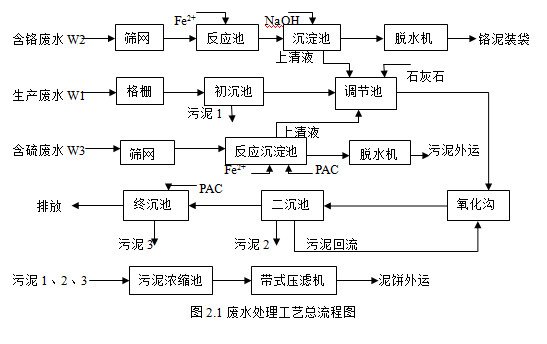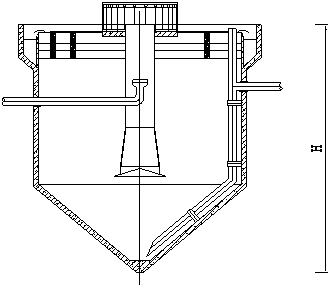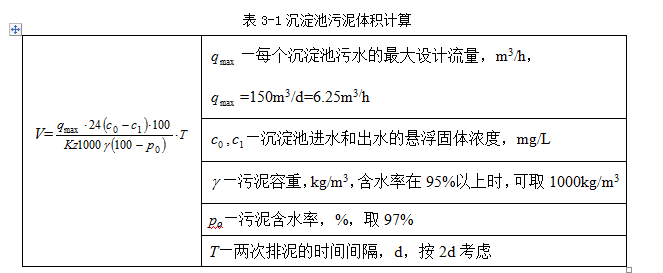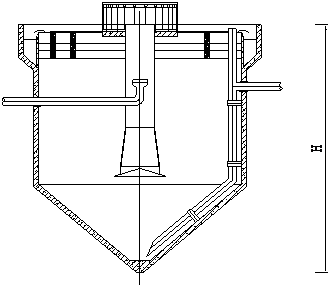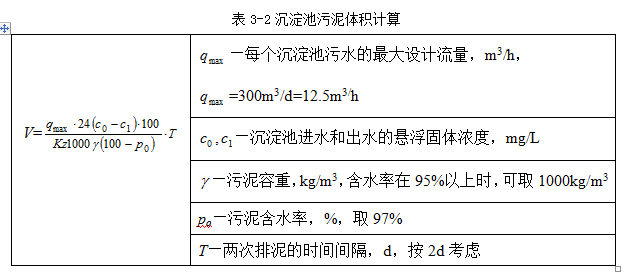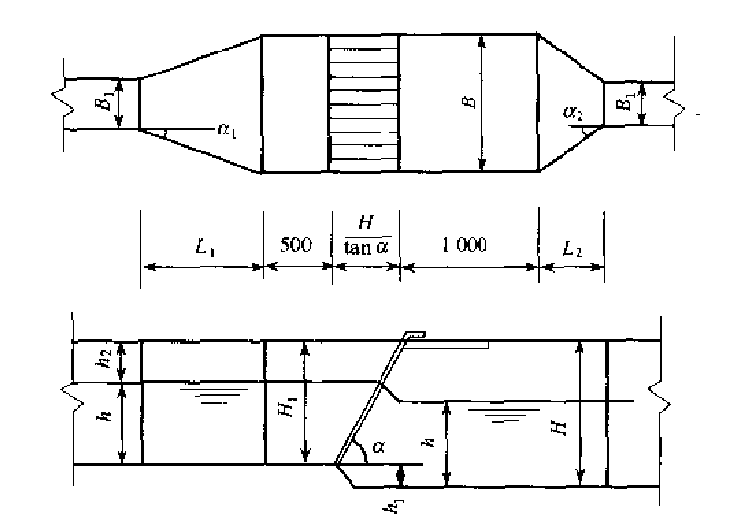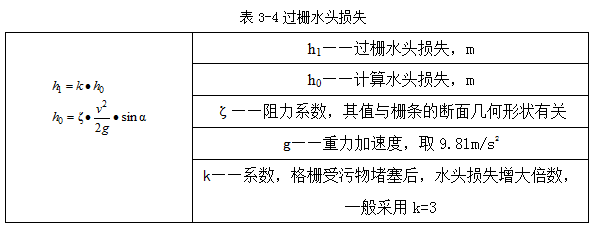制革废水治理工艺研究及设计毕业论文
2020-07-06 18:17:01
摘 要
制革业作为我国轻工业中的支柱产业,其产生的污染较为严重,对其产生的废水进行处理是环境领域研究的重点之一。本设计目标处理总量为1300m3/d的制革废水。通过使用碱式沉淀法和铁盐沉淀法分别对含铬废水和含硫废水进行预处理,使得总铬和硫离子处理达标后再与生产废水混合,混合后的综合废水处理采用在制革废水综合处理中应用较多的“氧化沟 混凝沉淀”组合作为主体处理工艺,使处理效果达到最佳,处理后的废水指标满足《制革及毛皮加工工业水污染物排放标准》(GB30486-2013)表二直接排放标准达标排放,CODcr降至88mg/L,BOD降至26mg/L。
关键词:制革废水,预处理,氧化沟,达标排放
Research and Design of Tanning Wastewater Treatment Process
Abstract
As a pillar industry in China's light industry, the tanning industry produces relatively serious pollution. The treatment of waste water produced by it is one of the focuses of environmental research.This design goal deals with a total amount of 1300m3/d tannery wastewater.The chromium-containing waste water and sulfur-containing waste water are pretreated by using the basic precipitation method and the iron salt precipitation method, respectively, so that the total chromium and sulfur ions are treated and the waste water is mixed with the waste water after treatment.The integrated wastewater treatment after mixing uses the “oxidation ditch coagulation and sedimentation” combination, which is widely used in the comprehensive treatment of tanning wastewater, as the main treatment process to achieve the best treatment effect.The treated wastewater indicators meet the emission standards of the direct emission standards in Table 2 of the "Tanned and Fur Processing Industry Water Pollutant Emission Standards" (GB30486-2013).CODcr, dropped to 88 mg/L and BOD to 26 mg/L.
Key Words:Tannery wastewater;Pretreatment;Oxidation ditch;Discharging standard
目 录
摘 要 I
Abstract II
第一章 总论 1
1.1设计目的和内容 1
1.1.1设计目的 1
1.1.2设计原则 1
1.2基本资料 1
1.2.1设计原始资料 1
第二章 方案论证 3
2.1废水处理工艺论证: 3
2.1.1含硫废水的处理 3
2.1.2铬鞣废水的处理 3
2.1.3综合废水的处理 4
2.2结论 4
2.3.1处理工艺流程 5
2.3.2设计水质处理效果 6
第三章 工艺设计 7
3.1含铬废水处理设计计算 7
3.1.1筛网 7
3.1.2反应池 7
3.1.3沉淀池 8
3.2含硫废水处理设计计算 10
3.2.1筛网 10
3.2.2沉淀池 10
3.3综合废水处理设计计算 13
3.3.1格栅 13
3.3.2初沉池 15
3.3.3调节池 17
3.3.4氧化沟设计 19
3.3.5二沉池的设计 21
3.3.6终沉池 23
3.4污泥处理 27
3.4.1污泥量的确定与计算 27
3.4.2排泥泵房 28
3.4.3污泥浓缩池 28
3.4.4投泥泵房 30
3.4.5污泥脱水机房 31
第四章 总平面设计 32
4.1平面设计原则 32
第五章 高程设计 34
5.1高程设计原则 34
5.2高程设计计算 34
第六章 设备选型 41
6.1污水 41
6.2污泥 42
第七章 图纸 43
参考文献 44
致谢 45
第一章 总论
1.1设计目的和内容
1.1.1设计目的
深入的了解所学专业知识,对设计、绘图进行学习运用。针对废水的性质,提出合理的应对方案,对主要的构筑物的尺寸进行设计计算,撰写计计算说明书绘制相应的图纸。
1.1.2设计原则
遵循技术要先进、质量保第一、经济要合理的原则,环保设计遵循国家的环保法律、法规和政策,要满足污染物排放的国家标准和地方标准。
1.2基本资料
1.2.1设计原始资料
1、设计出水水质
废水经处理后应符合《制革及毛皮加工工业水污染物排放标准》(GB30486-2013)表二直接排放标准。
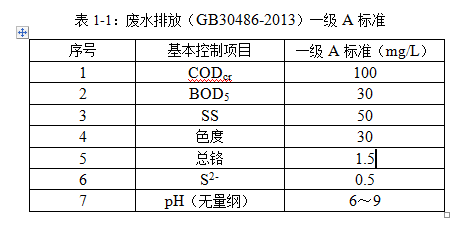
2、设计进水的指标见表1-2
表1-2进水水量水质
废水来源 | 排放量 | 污染物名称 | 处理前浓度(mg/L) | 处理方法 | 处理要求 |
生产废水W1 | 1000 | CODCr | 2500 | 物化 生化法处理 | 符合国家一级排放标准 |
BOD5 | 1200 | ||||
SS | 1000 | ||||
pH | 10 | ||||
色度 | 600 | ||||
鞣制含铬废水W2 | 100 | CODCr | 1000 | ||
总铬 | 100 | ||||
SS | 1000 | ||||
pH | 4~6 | ||||
含硫废水W3 | 200 | CODCr | 800 | ||
S2- | 50 | ||||
SS | 500 | ||||
pH | 6~8 |
3、厂区的水文与地形
风向:主导风向北风;
相关图片展示:
